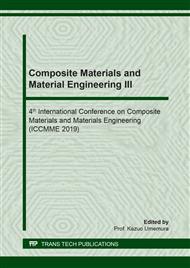p.115
p.121
p.127
p.133
p.139
p.145
p.153
p.160
p.166
Fabrication and Surface-Enhanced Raman Scattering Activities of Cross-Linked Polyvinyl Alcohol/Ag Nanofibers
Abstract:
This work describes the fabrication steps and surface-enhanced Raman scattering (SERS) activities of the cross-linked polyvinyl alcohol (PVA)/Ag nanofibers. The water-insoluble electrospun PVA/Ag nanofibers were achieved by post-electrospinning treatment processes. Physical crosslinking was induced by heat treatments, while chemical crosslinking took place through the reactions with glutaraldehyde (GA). Scanning electron microscopy (SEM) images have shown that cross-linked PVA/Ag nanofibers remained mostly intact after immerging in water for 30 min. The testing of SERS activities was performed on these substrates using the methylene blue (MB) molecules as tested substances. The results have shown that the PVA/Ag nanofibers can be used as SERS substrates for rapid screening of biochemical substances. The Raman enhancement factor (EF) of approximately 104 corresponding to the detection limit of 10-4 M of MB molecules was achieved.
Info:
Periodical:
Pages:
139-144
Citation:
Online since:
May 2019
Price:
Сopyright:
© 2019 Trans Tech Publications Ltd. All Rights Reserved
Share:
Citation:


